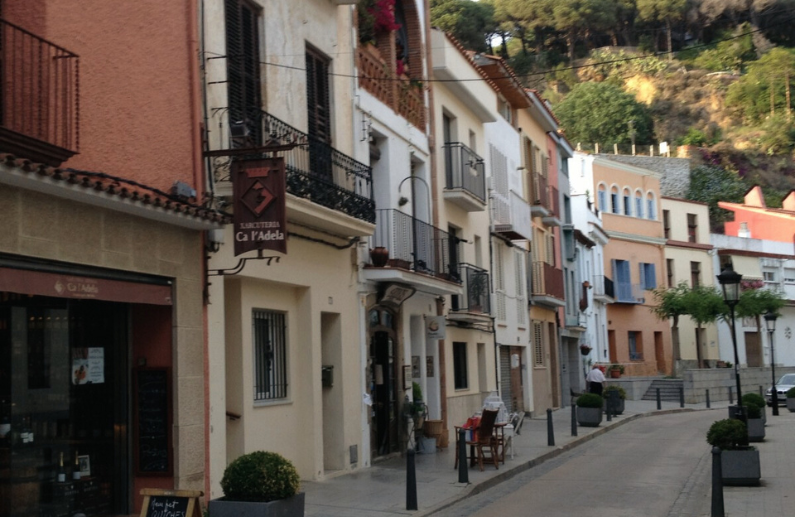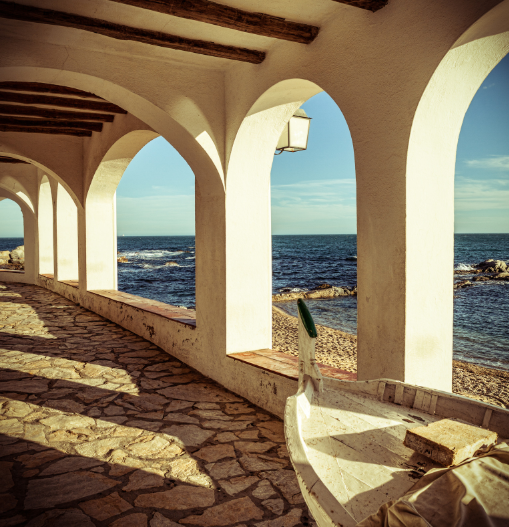
The History and Charm of Caldes d’Estrac: A Journey Through Time
Introduction
Nestled along the Catalan coast, Caldes d’Estrac is a town steeped in history, culture, and natural beauty. Known for its thermal waters, aristocratic past, and artistic heritage, this charming seaside destination has evolved while preserving its historical essence. In this article, we’ll explore the town’s rich history, key landmarks, and the legacy that makes it a unique stop in Catalonia.
The Origins of Caldes d’Estrac
Caldes d’Estrac’s story begins with its thermal springs, which have been revered since ancient times for their healing properties. The name “Caldes” itself derives from the Latin “Aquae Calidae”, meaning “hot waters,” a testament to the Roman influence in the region.
During the medieval period, the town flourished as a spa destination, attracting nobility and religious figures. The local economy thrived on agriculture, fishing, and the spa industry, laying the foundation for its future development.
Architectural and Cultural Heritage
Caldes d’Estrac is a treasure trove of historical architecture, where past and present seamlessly blend. The town’s skyline is defined by elegant mansions, historic churches, and modernist influences, each telling a story of its illustrious past.
One of the town’s most remarkable sites is the Fundació Palau, a museum dedicated to Catalan art and home to an extensive collection of works by Pablo Picasso. This cultural landmark reflects the town’s long-standing connection to art and literature.
Another must-visit site is the Sant Vicenç Church, a Gothic structure that has witnessed centuries of history. Its stone façade and intricate altarpieces offer a glimpse into the town’s religious and artistic heritage.
The Passeig dels Anglesos (Promenade of the English) is another iconic spot, lined with stately 19th-century villas. Built as summer residences for Barcelona’s aristocracy, these houses showcase modernist and neoclassical designs, adding to the town’s timeless charm.
The Thermal Baths: A Legacy of Well-being
Since Roman times, the thermal waters of Caldes d’Estrac have been known for their healing properties. The town’s name itself is a tribute to its hot springs, which have attracted visitors for centuries.
In the 19th century, Caldes d’Estrac’s thermal baths became a center of luxury and health tourism. Aristocrats and prominent figures frequented the local spas, seeking relaxation and rejuvenation. Today, this tradition continues, with modern facilities offering spa treatments and hydrotherapy experiences that maintain the town’s historical connection to wellness.
The municipal thermal baths, still in operation, allow visitors to experience the same healing waters that once drew Roman settlers and Catalan nobility.
Caldes d’Estrac Today: A Blend of Past and Present
Despite its deep historical roots, Caldes d’Estrac has evolved into a modern yet charming coastal town that continues to honor its heritage. Efforts to preserve historical landmarks, promote cultural tourism, and maintain its exclusive seaside ambiance have kept the town a hidden gem in Catalonia.
Throughout the year, visitors can enjoy art exhibitions, literary events, and music festivals, many of which are held at the Fundació Palau and other historic venues. The town’s beaches, promenades, and thermal baths provide the perfect balance between relaxation and cultural exploration.
Caldes d’Estrac remains a place where history, art, and nature coexist harmoniously, offering a unique experience to those who seek a destination rich in character and tradition.
FAQs
What makes Caldes d’Estrac historically significant?
Caldes d’Estrac’s history is deeply tied to its thermal waters, which have been renowned since Roman times. Over the centuries, it became a retreat for nobility, artists, and intellectuals, shaping its cultural and architectural heritage.
What are the must-visit historical landmarks in Caldes d’Estrac?
Some of the top historical landmarks include Sant Vicenç Church, the Fundació Palau museum, and the Passeig dels Anglesos, known for its 19th-century mansions. The municipal thermal baths also offer a glimpse into the town’s centuries-old spa tradition.
Why are the thermal baths important in Caldes d’Estrac’s history?
The town’s hot springs have been a defining feature since Roman times, attracting visitors seeking wellness and relaxation. The baths played a crucial role in shaping the town’s economy and reputation as a high-class retreat in the 19th and 20th centuries


